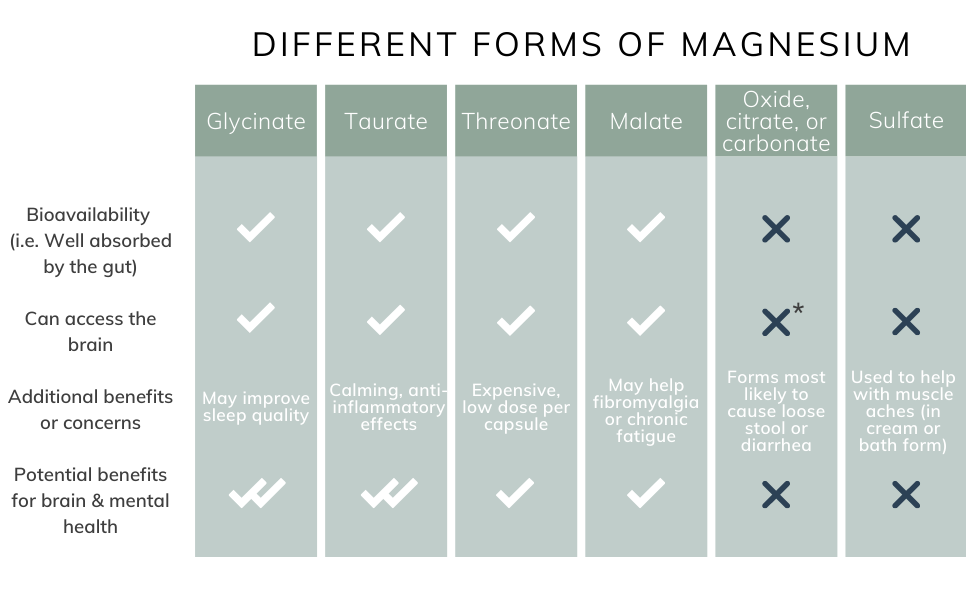Can taking magnesium have side effects?

Doses less than 350 mg daily are safe for most adults. In some people, magnesium might cause stomach upset, nausea, vomiting, diarrhea, and other side effects. When taken in very large amounts (greater than 350 mg daily), magnesium is POSSIBLY UNSAFE.
Why is it better to take magnesium at night?
Magnesium helps the body relax. This nutrient reduces stress and helps you sleep longer. In contrast, melatonin helps you get to sleep faster. Both magnesium and melatonin can be used to treat insomnia, sometimes even in combination. One may also ask what are the symptoms of low magnesium in the body? What are the symptoms of magnesium deficiency symptoms? loss of appetite. nausea and vomiting. fatigue and weakness. shaking. pins and needles. muscle spasms. hyperexcitability. sleepiness.
Correspondingly, how much magnesium bisglycinate should i take daily?
Dosage and possible side effects The average recommended daily amount of magnesium is 320 mg for women and 420 mg for men ( 2 ). The amounts in different supplement formulations may vary, so check the label to ensure you're taking the most appropriate dose. People also ask what is the difference between magnesium and magnesium bisglycinate? Marine magnesium is popular at the moment. It is a mixture of inorganic salts that offers good magnesium content although absorption is poor. Magnesium bisglycinate is an amino acid chelate that binds magnesium to glycine, aiming to reproduce the form in which magnesium is found naturally in food.
Thereof, is magnesium bisglycinate good for sleeping?
Magnesium for sleep Some studies have found that magnesium supplements can: Make it easier to fall asleep. Improve sleep quality. Reduce symptoms of restless legs syndrome, which can interfere with a good night's sleep. What is the difference between magnesium Threonate and magnesium L-threonate? Magnesium threonate is the magnesium salt of the threonic acid. This name is a common term used to name other magnesium salts of threonic acid. The most common among them is magnesium L-threonate which is the magnesium salt of the L-isomer of the threonic acid. L-threonate is a metabolite of ascorbic acid.
:max_bytes(150000):strip_icc()/magnesium-citrate-benefits-side-effects-dosage-and-interactions-4177658_final-bc671784f8dc4b4fbe1e7766c842bd1e.jpg)

/magnesium-oxide-benefits-4184809-5c5db9f746e0fb0001442152.png)



Similar articles
- What are the side effects of taking milk thistle?
Side effects include nausea, vomiting, gas, stomach pain, diarrhea, and indigestion. nausea, loss appetite. 22.1443 AH
- What are the side effects of taking alpha-lipoic acid?
Side effects include headache, nausea, vomiting, heartburn, nausea, as well as heartburn. Alpha-lipoic Acid can be applied to the skin for as long as 12 weeks. Some people may experience a rash.
- Are there any side effects to taking curcumin?
- What side effects does milk thistle have?
- Does sesame oil have side effects?
- Does L-citrulline have side effects?
- Does L Theanine have any side effects?
 Drugs Forum
Drugs Forum
